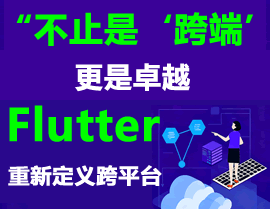如何在Rust中实现触摸范围缩短功能
我正在开发一个Rust应用程序,需要实现触摸范围缩短功能,即在用户触摸屏幕时只响应特定区域的输入。目前遇到的问题是不知道如何高效地检测和处理缩小后的触摸区域,特别是在处理多点触控时如何正确过滤超出范围的触摸事件。请问在Rust中应该如何实现这样的功能?有没有推荐的库或者最佳实践?
2 回复
在Rust中实现触摸范围缩短功能,可以通过以下步骤:
-
事件拦截:使用GUI库(如egui、iced)的事件系统,在触摸事件触发时判断坐标是否在缩短后的范围内。
-
范围计算:定义缩短后的矩形区域(如原区域的80%),通过坐标变换或直接计算边界。
-
条件处理:
fn is_in_shrunk_area(touch_x: f32, touch_y: f32, rect: Rect) -> bool { let shrink_ratio = 0.8; let new_width = rect.width() * shrink_ratio; let new_height = rect.height() * shrink_ratio; let center = rect.center(); touch_x >= center.x - new_width / 2.0 && touch_x <= center.x + new_width / 2.0 && touch_y >= center.y - new_height / 2.0 && touch_y <= center.y + new_height / 2.0 } -
事件过滤:在事件回调中,若坐标不在缩短范围内则忽略事件。
注意:需根据具体GUI库调整实现,如egui可使用interact_rect的缩放版本。
在Rust中实现触摸范围缩短功能,通常涉及处理触摸事件并调整其有效区域。以下是基于常见场景的实现方法:
核心思路
- 监听触摸事件(如触摸开始、移动、结束)
- 定义原始触摸区域和缩短后的目标区域
- 在事件处理中判断触摸点是否在目标区域内
- 对落在原始区域但不在目标区域的触摸事件进行忽略或特殊处理
代码示例(使用winit库处理窗口事件)
use winit::event::{Event, WindowEvent};
use winit::event_loop::{ControlFlow, EventLoop};
use winit::dpi::PhysicalPosition;
fn main() {
let event_loop = EventLoop::new();
// 定义原始区域和缩短后的目标区域(示例使用矩形区域)
let original_bounds = (100.0, 100.0, 300.0, 400.0); // (x, y, width, height)
let shortened_bounds = (150.0, 150.0, 200.0, 200.0);
event_loop.run(move |event, _, control_flow| {
*control_flow = ControlFlow::Wait;
match event {
Event::WindowEvent { event: WindowEvent::Touch(touch), .. } => {
let pos = (touch.location.x, touch.location.y);
// 检查是否在缩短后的区域内
if is_point_in_bounds(pos, shortened_bounds) {
println!("有效触摸: {:?}", pos);
// 处理有效触摸事件
}
// 可选:处理原始区域内的无效触摸
else if is_point_in_bounds(pos, original_bounds) {
println!("触摸被忽略(范围外): {:?}", pos);
}
}
Event::WindowEvent { event: WindowEvent::CloseRequested, .. } => {
*control_flow = ControlFlow::Exit;
}
_ => (),
}
});
}
// 判断点是否在矩形区域内
fn is_point_in_bounds((x, y): (f64, f64), (bx, by, width, height): (f64, f64, f64, f64)) -> bool {
x >= bx && x <= bx + width && y >= by && y <= by + height
}
关键说明
- 区域定义:根据实际需求调整区域形状(矩形/圆形等)
- 平台适配:移动端可能需要使用
android-activity或cocoa等库 - 性能优化:对于复杂区域判断可使用空间分割算法
- 手势处理:结合
GestureDetector实现更复杂交互
扩展建议
- 使用
euclid库处理几何计算 - 通过配置参数动态调整缩短范围
- 添加触摸反馈动画提升用户体验
实际实现需根据具体应用场景(如游戏UI、移动应用等)调整代码结构和依赖库。






